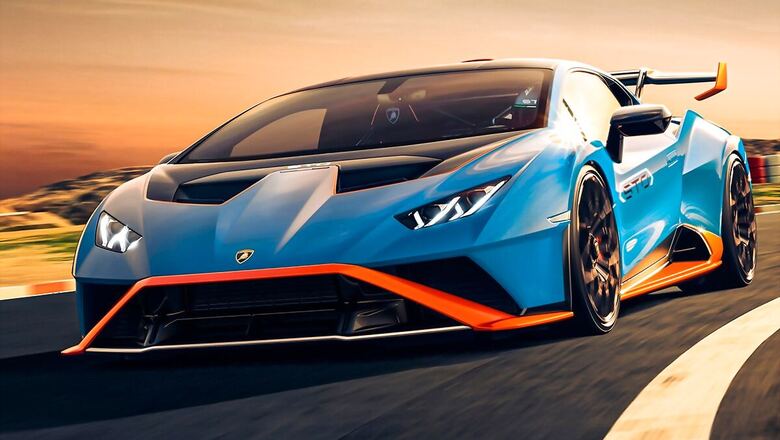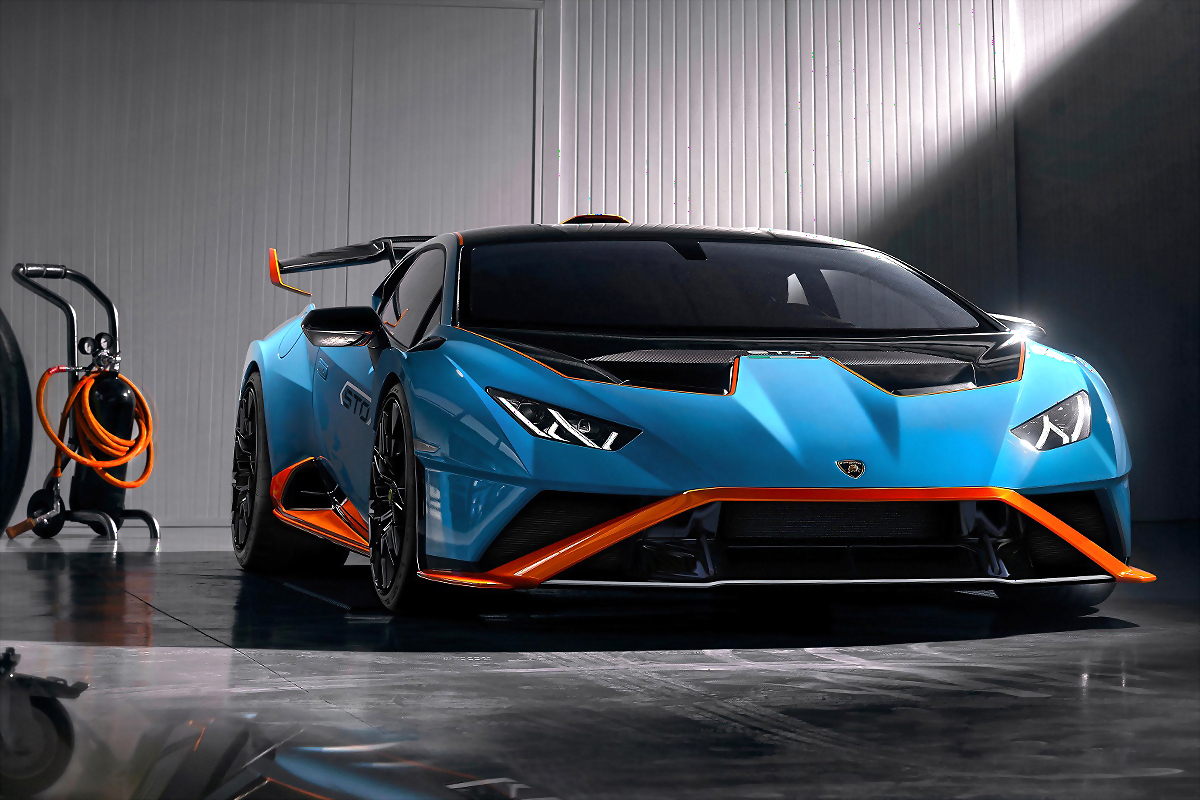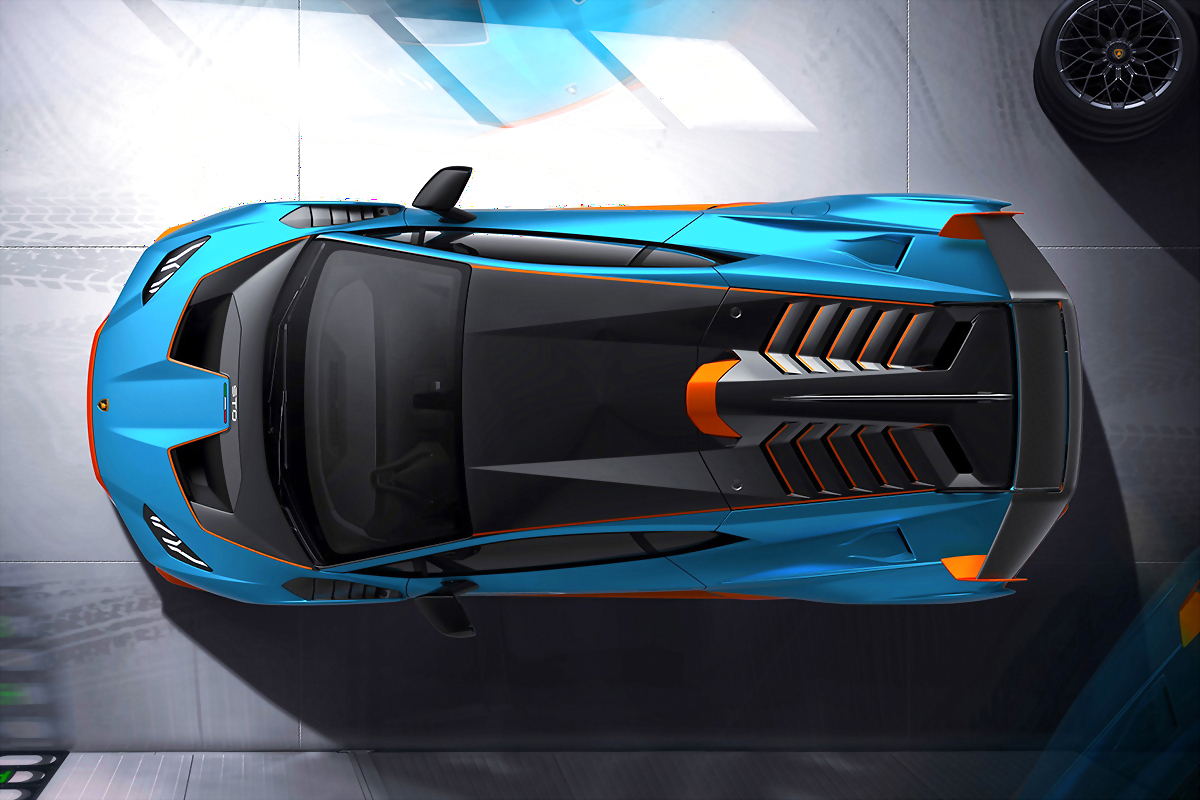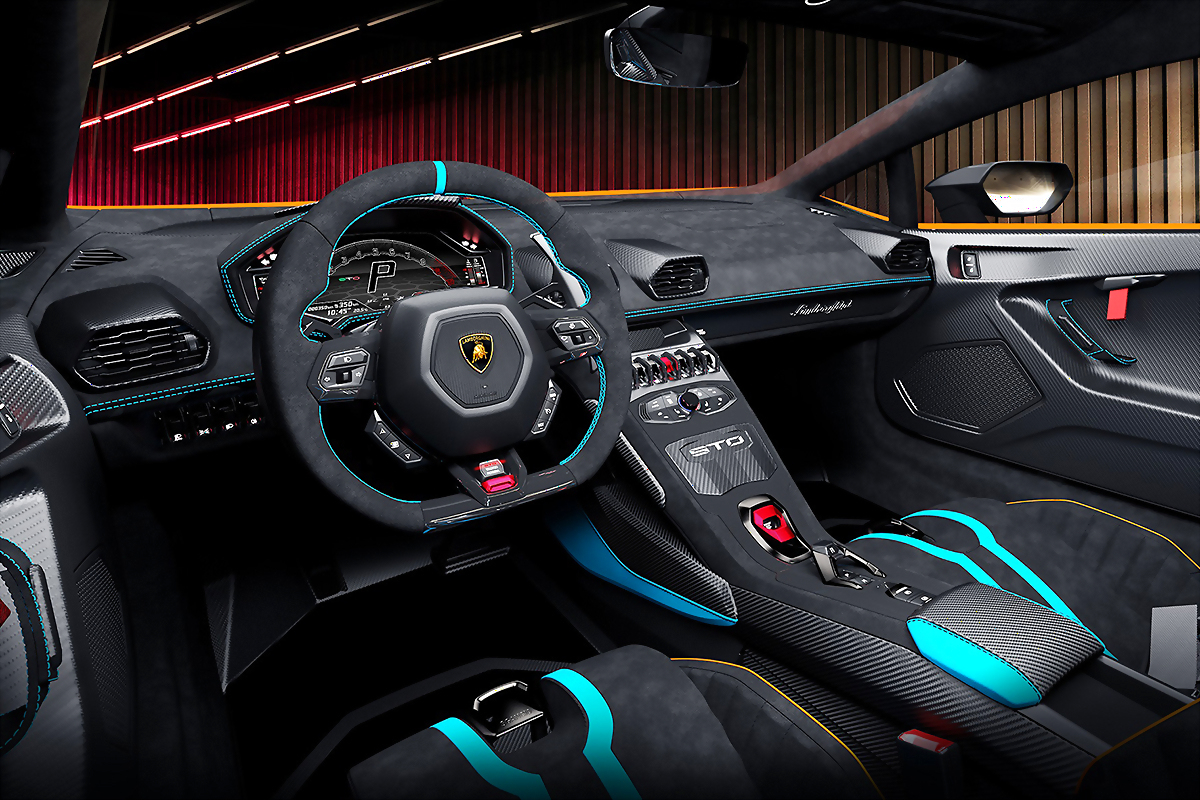Lamborghini Huracan STO Unveiled, Does 0-100 km/h in 3.0 Seconds: Here's Everything You Need to Know

views
Lamborghini has unveiled the Lamborghini Huracan STO (Super Trofeo Omologata) which is a road-homologated super sports car inspired by the racing heritage of Lamborghini Squadra Corse’s one-make race series with Huracan Super Trofeo EVO, as well as its three-time 24 Hours of Daytona-winning and two-time 12 Hours of Sebring-winning Huracan GT3 EVO.
With its V10 naturally aspirated 640 hp (470 kW) power plant producing 565 Nm at 6,500 rpm, the rear-wheel-drive Huracan STO delivers acceleration of 0-100 km/h in 3.0 seconds, 0-200 km/h in 9.0 seconds and a top speed of 310 km/h.
The Huracan STO sports an entirely new exterior design. As per the company, every aspect of the Huracan STO draws on the aerodynamic efficiency and lightweight technologies demanded in motorsports.
Here is everything you need to know about the Lamborghini Huracan STO:
-Cofango with air ducts, front splitter and louvres
The front bonnet, fenders and the front bumper are comprised of one single component: the ‘cofango’ created by Lamborghini engineers which combines the ‘cofano’ (hood) and ‘parafango’ (fender) including the front bumper, inspired by the Lamborghini Miura and more recent Sesto Elemento.
New air ducts on the front bonnet increase the airflow through the central radiator to improve engine cooling as well as helping generate downforce. The cofango also incorporates a new front splitter, directing airflow to the newly designed underbody of the car and to the rear diffuser.
The cofango is shaped to push the airflow on top of the front fenders, which incorporate louvres to maximize airflow exiting from the wheelhouse, reducing pressure inside and increasing the front downforce. The side profile of the cofango directs airflow around the front wheels, reducing drag.

-Rear fender with NACA air intake
A new rear fender derived from the Super Trofeo EVO achieves both reduction of the front area of the car and consequently the drag while increasing rear downforce and the car’s overall aerodynamic efficiency. A NACA air intake integrated into the STO’s rear fender serves as an engine air intake, with the shortened duct allowing a 30% decrease in static pressure losses.
-Rear engine bonnet with an air scoop
The revised rear hood design features an integrated air scoop to improve air-cooling at the rear underhood. Dedicated air deflectors, integrated into the rear bonnet’s frame, manage the significant incoming airflow from the snorkel according to the temperature regulation needs of the engine and exhaust outlet.
-Shark fin
An integrated ‘shark fin’ on the rear bonnet improves the dynamic abilities of the STO, particularly when cornering: in such conditions, the incoming airflow has a yaw angle, and the different pressure levels generated by the two sides of the fin create a positive effect on yaw stability. The fin also helps straighten airflow onto the wing, increasing wing efficiency during cornering.
-Adjustable rear wing
A manual, easily adjusted aero set-up of the new rear wing optimizes aerodynamic balance and drag resistance according to track characteristics. A single slotted wing with double airfoil allows the front part of the airfoil to rotate into three positions to enhance rear downforce. By reducing the gap between the front and rear airfoil, compression is increased on the upper side, upping the suction intensity and extension on the bottom of the front airfoil. The aero balance of the car can thus fluctuate by 13%, adapting the STO to different driving styles and conditions.
-Brake cooling for the highest performance
New front brake cooling ducts are dedicated to cooling the discs and callipers of the new CCM-R brakes, working in conjunction with the cofango air-louvres that dispel hot air from the front wheelhouses. Additional air intakes including on the underbody, and optimized nolders, are located at the rear.
-Aerodynamic result
The Huracan STO achieves the highest level of downforce in its class with the best aero balance for a rear-wheel-drive car, with the delivery of a superior aerodynamic load a key factor in its enhanced cornering performance. Overall airflow efficiency is improved by 37% and a significant downforce increase of 53% is reached over the Huracan Performante.
-Lightweight approach
The Huracan STO uses carbon fibre in more than 75% of its exterior panels, benefiting from complex structures produced as a single component for increased integrity while also reducing weight via less fixing points.
Using its expertise in lightweight technologies, for the rear fender Lamborghini’s R&D department has adopted a carbon fibre ‘sandwich’ technique utilized in the aerospace industry. Thanks to this technology, the Huracan STO uses 25% less carbon fibre material while maintaining the same structural rigidity. At a dry weight of 1,339 kg, the Huracan STO’s weight is reduced by 43 kg compared to the already lightweight Huracan Performante.
The Huracan STO incorporates a windscreen 20% lighter than the Huracan Performante, and features magnesium rims for the highest strength-to-weight ratio, saving further weight over aluminium alloys with the same load factor.
The magnesium rims are fitted with bespoke Bridgestone Potenza tires, available in two versions: one road-focused, the other more track-oriented.

-The Huracan STO Engine
The Huracan STO has at its heart the V10 aspirated engine of the Huracan EVO and Super Trofeo, outputting 640 hp (570 kW) and 565 Nm of torque at 6,500 rpm. With an increased wheel track, stiffer suspension bushing, specific anti-roll bars and Lamborghini’s MagneRide 2.0, the STO delivers all the emotion of a racecar while providing a comfortable road experience. The engine has been calibrated for a very sporty and responsive racing feel, with a direct pedal-to-throttle feeling and improved engine sound sharpness at high revs. The gearchange speed has been further increased to provide highly responsive and rapid gearshift.
Lamborghini rear-wheel steering, and a more direct and fixed steering ratio, has been designed for a race environment and a more intimate relationship between driver, car and track.
Also Watch:
-Three new ANIMA driving modes
Three new driving modes exemplify the Huracan STO’s racing spirit, focused on high performance driving environments: STO, Trofeo and Pioggia. The default STO mode is for road driving and fun on curving roads. Every aspect of the Lamborghini Veicolo Dinamica Integrata (LDVI) vehicle dynamics system is optimized for all road conditions and coupled with a road-oriented suspension setting. The fully active ESC can be switched off for maximum driving fun while still supporting the driver.
In Trofeo mode, all systems are optimized for dry asphalt and the fastest lap times on the track. The LDVI assures maximum performance through dedicated torque vectoring and performance traction control strategies for both straight sprints, in ESC ON mode, as well for lap timing, in ESC OFF. The new Brake Temperature Monitoring (BTM) estimation algorithm allows the driver to constantly check the braking system’s temperature, and to manage wear of the system during its life cycle.
Pioggia (rain) mode optimizes traction control, torque vectoring, rear-wheel steering and the ABS on wet asphalt. Traction control and the braking system are calibrated to minimize loss of grip and engine torque cut, with the LDVI system employing precise estimation to deliver only the torque needed in wet situations. The torque-vectoring reflects the low adhesion conditions and ensures better cornering, while the suspension is calibrated to maximize grip and improve load transfer.
-The new CCM-R braking system
The motorsports DNA of the Huracan STO is as evident in its braking system. With Brembo CCM-R brakes drawing on materials expertise from F1 applications to deliver superior durability, the CCM-R discs provide four times higher thermal conductivity than traditional CCB. Stress resistance is 60% higher, with maximum brake power improved by 25% and longitudinal deceleration by 7%. This results in robust braking consistency in all driving conditions: braking feels sporty, can be perfectly modulated, and thus is optimized for track use.

-The Huracan STO interior
The interior of the Huracan STO reflects the lightweight persona of the exterior: extensive use of carbon fibre features throughout the cockpit, including sport seats in full carbon fibre; an Alcantara interior with Lamborghini’s Carbonskin; carpets removed and replaced by floor mats in carbon fibre; and the full carbon fibre lightweight door panels with a door latch as an opener. A rear arch with four-point seatbelts and a newly designed front trunk for helmet storage, underline the Huracan STO’s racing DNA. The rear arch, developed in cooperation with our Technical Partner Akrapovič, is made from high-grade titanium alloys. It is 40% lighter than conventional stainless-steel rear arches.
New Human Machine Interface (HMI) graphics feature on the Huracan’s touch screen, which manages the car’s functions including drive mode indicator, the LDVI system, tire pressures and brake temperatures. A fully connected telemetry system allows pilots driving their Huracan STO on racetracks to monitor and record their performance and to analyze the data via the Lamborghini UNICA app.
Owners of the Huracan STO can fully personalize both the exterior and interior of their race car-on-the-road via a rich Ad Personam personalization program, with limitless paint and trim combinations as well as race-style vinyl. The concept of a personalized livery is inherent in the design of the Huracan STO, just as Huracan Super Trofeo race cars line up in their unique colours and designs on the starting grid. The launch livery of Blu Laufey and Arancio California exemplifies the Huracan STO’s young and sporty racing spirit.
-Market delivery of the Lamborghini Huracan STO
The first customers will take delivery of the new Lamborghini Huracan STO in spring 2021.
Read all the Latest News, Breaking News and Coronavirus News here


















Comments
0 comment